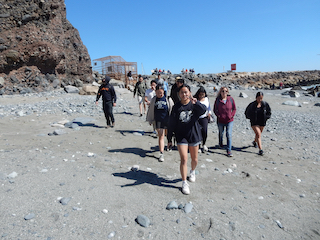
-
| 
-
| 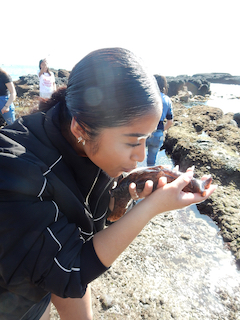
-
|
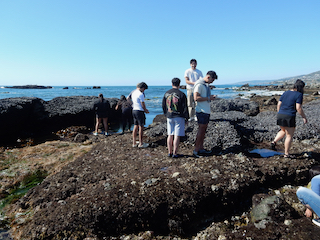
-
| 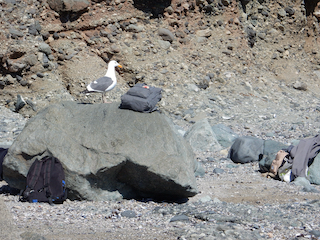
-
| 
Haliotis fulgens (green abalone)
|
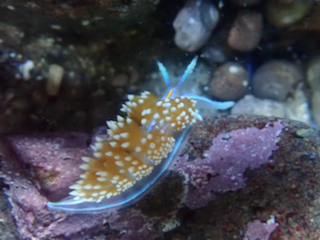
Hermissenda opalescens (the opalescent nudibranch)
| 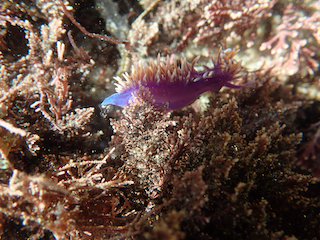
Flabellinopsis iodinea (Spanish shawl)
| 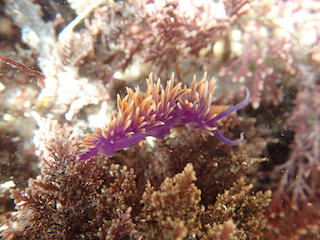
-
|

clingfish (northern or California)
| 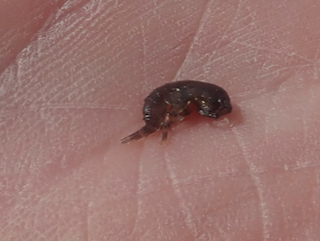
gammarid amphipod
| 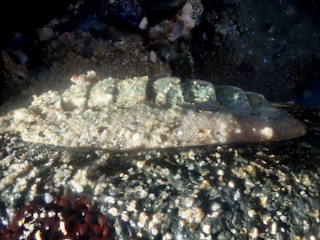
Stenoplax conspicua (conspicuous chiton)
|

small individual of Ophionereis annulata (banded brittlestar)
| 
-
| 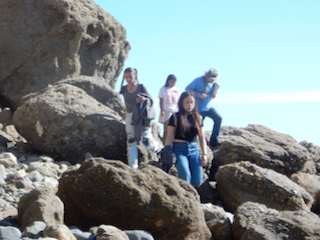
-
|
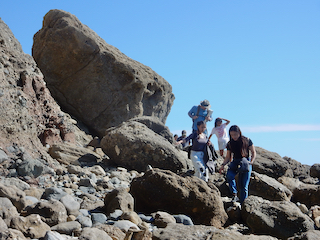
-
| 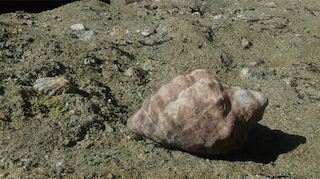
Mexacanthina lugubris was common in several areas we visited. This is a southern species that appears
to be expanding its range north in recent decades. I thought I had read a report that it was observed in Orange County in the 1930s, but whether or not it has
expanded to this area early, last time nearly a century ago, one wonders how it is impacting our resident mollucan fauna where it is becoming common, like Dana Point.
I haven't yet seen a study of its ongoing ecological impact. I don't know of reports north of Laguna Beach, where I have seen it personally since 2009.
| 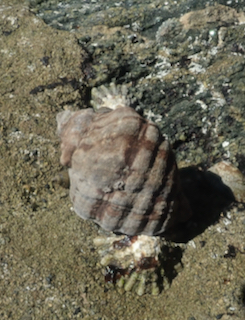
Mexacanthina lugubris appeared to be drilling this limpet, probably Lottia conus.
|
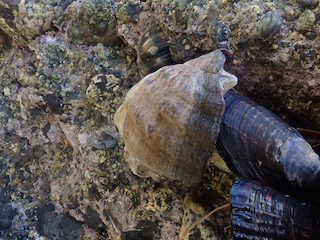
Mexacanthina lugubris appeared to be drilling this California mussel Mytilus californianus.
| 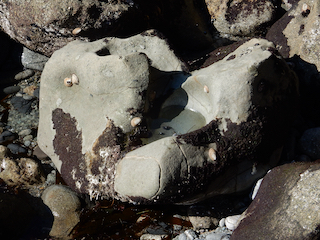
Territorial "farming" owl limpets (Lottia gigantea) are responsible for much of the bare space in the mid zone of the intertidal.
| 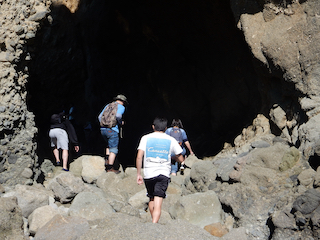
-
|
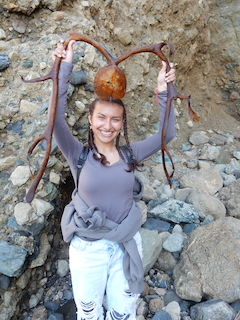
Pelagophycus porra, also known as Elk kelp, is a somewhat offshore kelp that lives in relatively
deeper water than our more common Macrocystis pyrifera (giant kelp) that dominates our drift.
| 
-
| 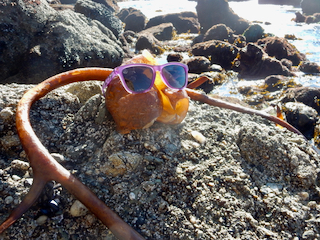
We found the red velvet mite, Neomolgus littoralis (Linnaeus, 1758), on this decaying elk kelp.
These mites are diurnal predators or scavengers and stand out, despite their tiny size, because of their bright red color.
I do not have an image of them because constantly moving tiny critters are too hard to photograph alive. N. littoralis is the name used in Morris, Abbott and Haderlie's masterful 1980 book,
Intertidal Invertebrates of California. To my knowledge as of 2023 it is still the name used for these mites in California. However, it was described by those authors
as widely distributed (Alaska to California, Japan, Connecticut, and Europe, but there have been no DNA studies that might reveal that it is instead a complex
of similar appearing species. It was first described from Europe and, according to WoRMS, it is still the only species recognized
in this genus. Surprisingly, there are no other available names,
proposed for other regions, that could be revived if these turn out to be separate species. These mites are common in the sea cave area of Dana Point. I have usually seen them actively moving on rocks
but I should look at kelp wrack more often.
|
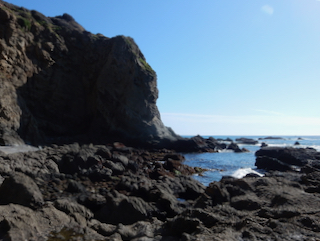
-
| 
Cyanoplax keepiana (Keep's chiton)
| 
-
|
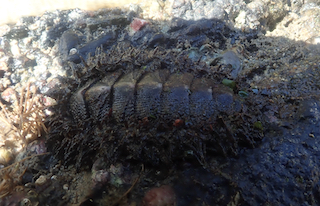
A relatively small Mopalia muscosa (mossy chiton)
| 
Petrolisthes cabrilloi (Cabrillo's porcelain crab)
| 
-
|

-
| 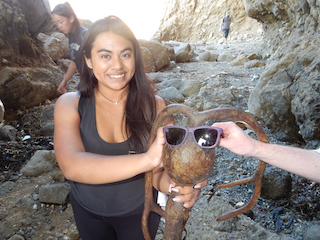
-
| 
Haliotis fulgens (green abalone) -- this one covered with a sponge. It was put back without injury.
|
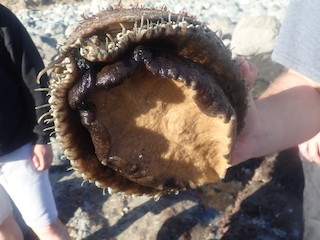
-
| 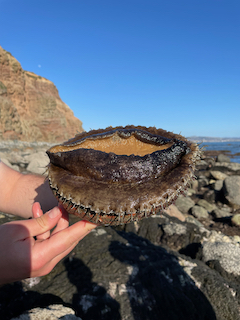
-
| 
-
|

-
| 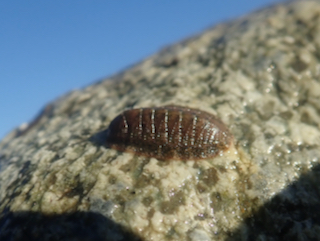
Lepidozona pectinulata juvenile, a common under-rock chiton in SoCal
| 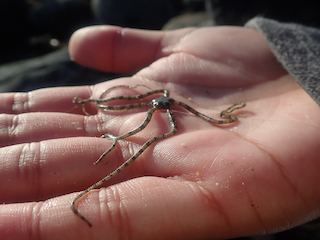
Ophionereis annulata (banded brittlestar) - another small one
|
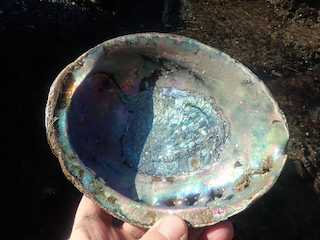
green abalone shell
| 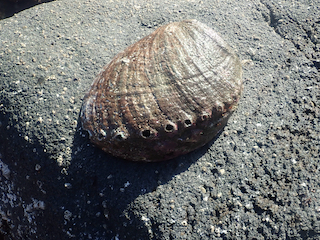
-
| 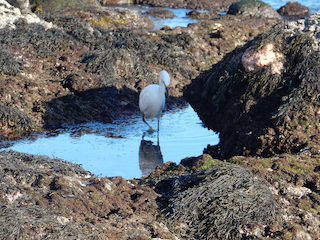
This snowy egret did not seem to mind me changing out of my water shoes nearby as it went about its hunt.
|
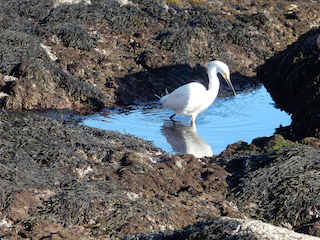
-
| 
-
| 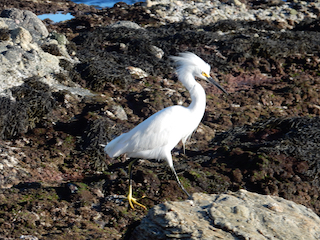
-
|
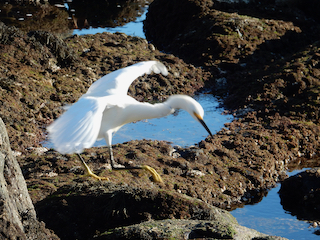
-
| 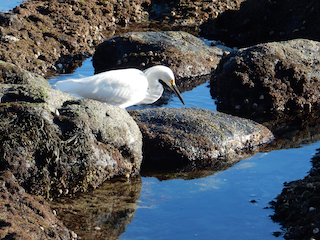
-
| 
-
|

The tall ship Pilgrim was a replica of the actual Pilgrim built in 1834
that once carried goods between Boston to California. It used to be docked where we
park to walk out to Dana Point but it sadly sank in March, 2020. -
L.A. Times article April 2020
|
 Under Construction!
Under Construction! Under Construction!
Under Construction!